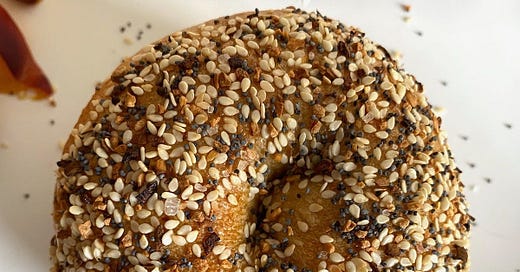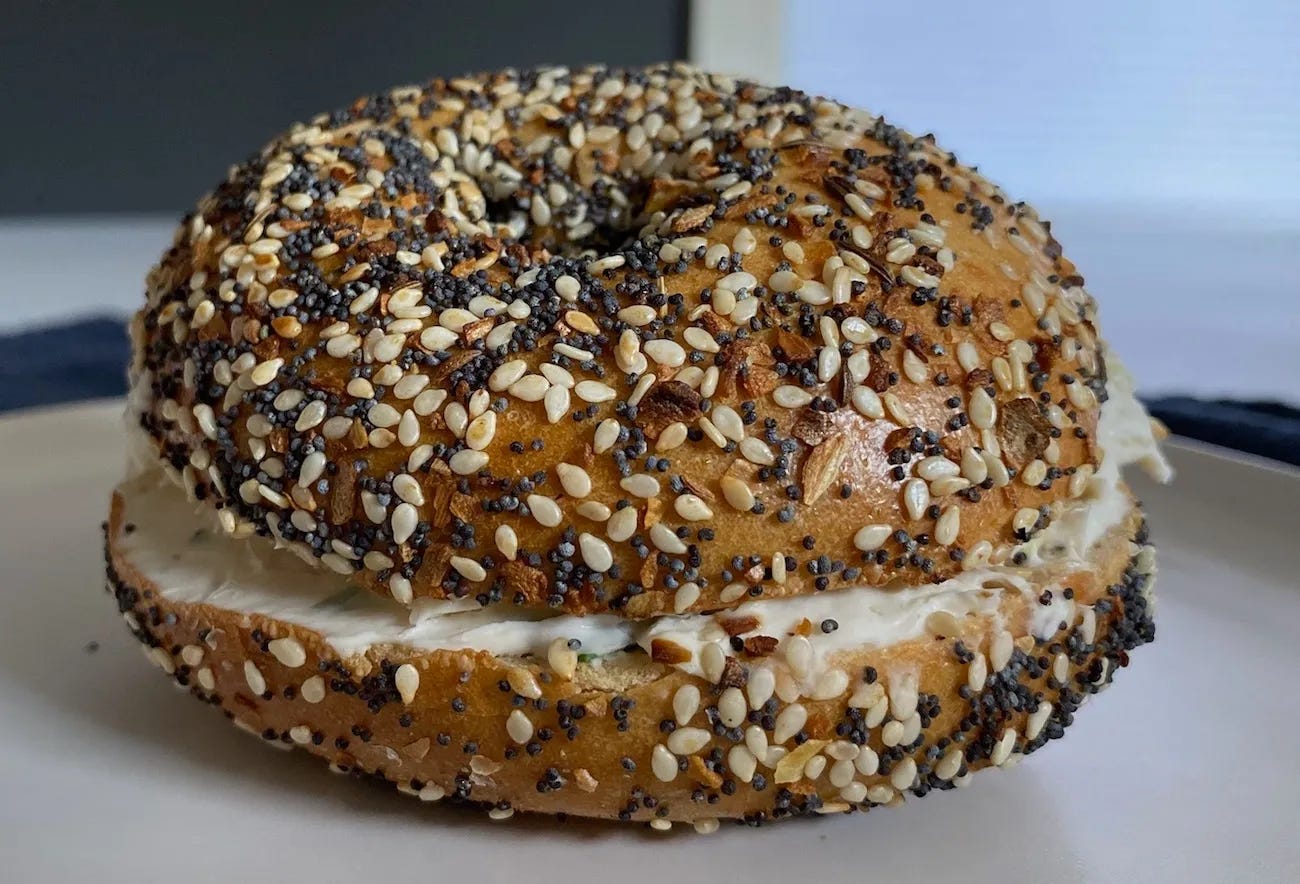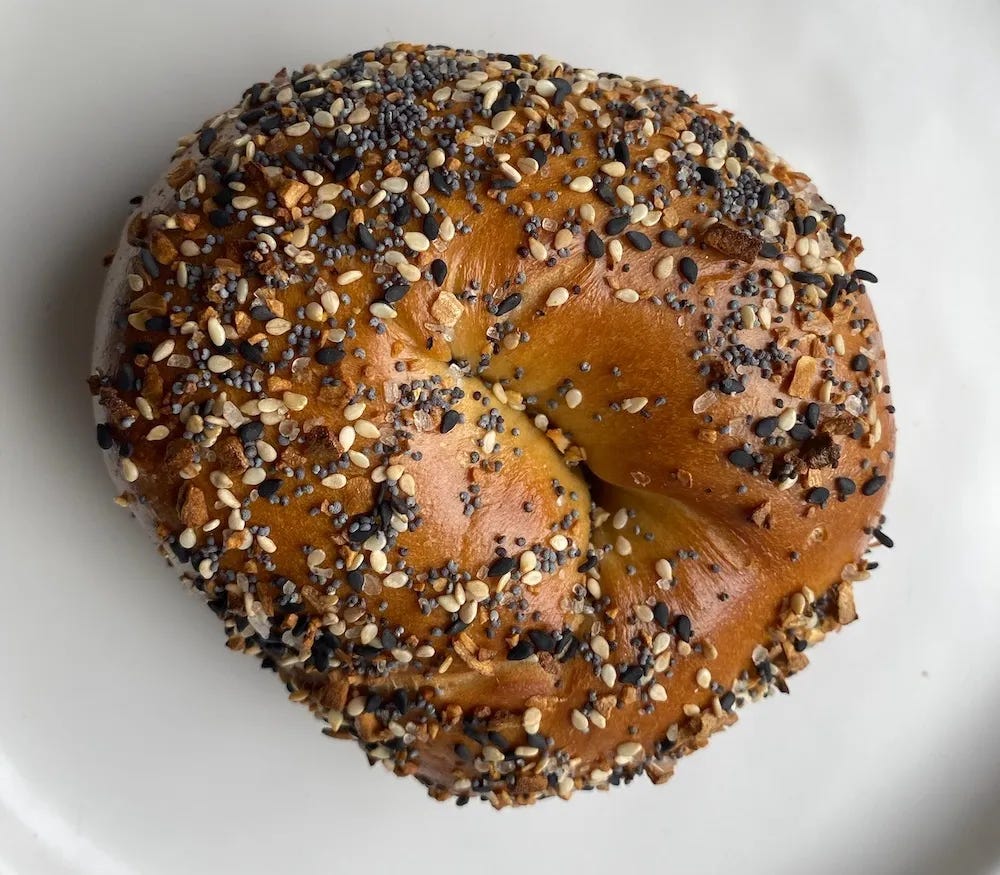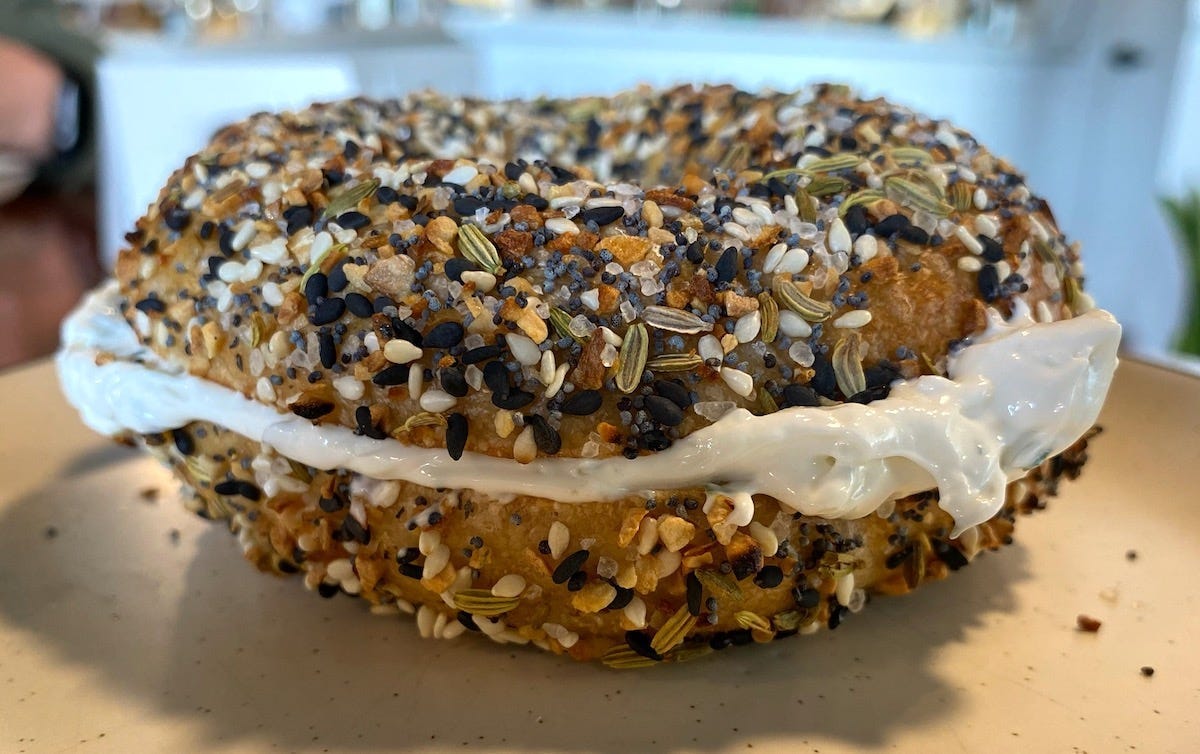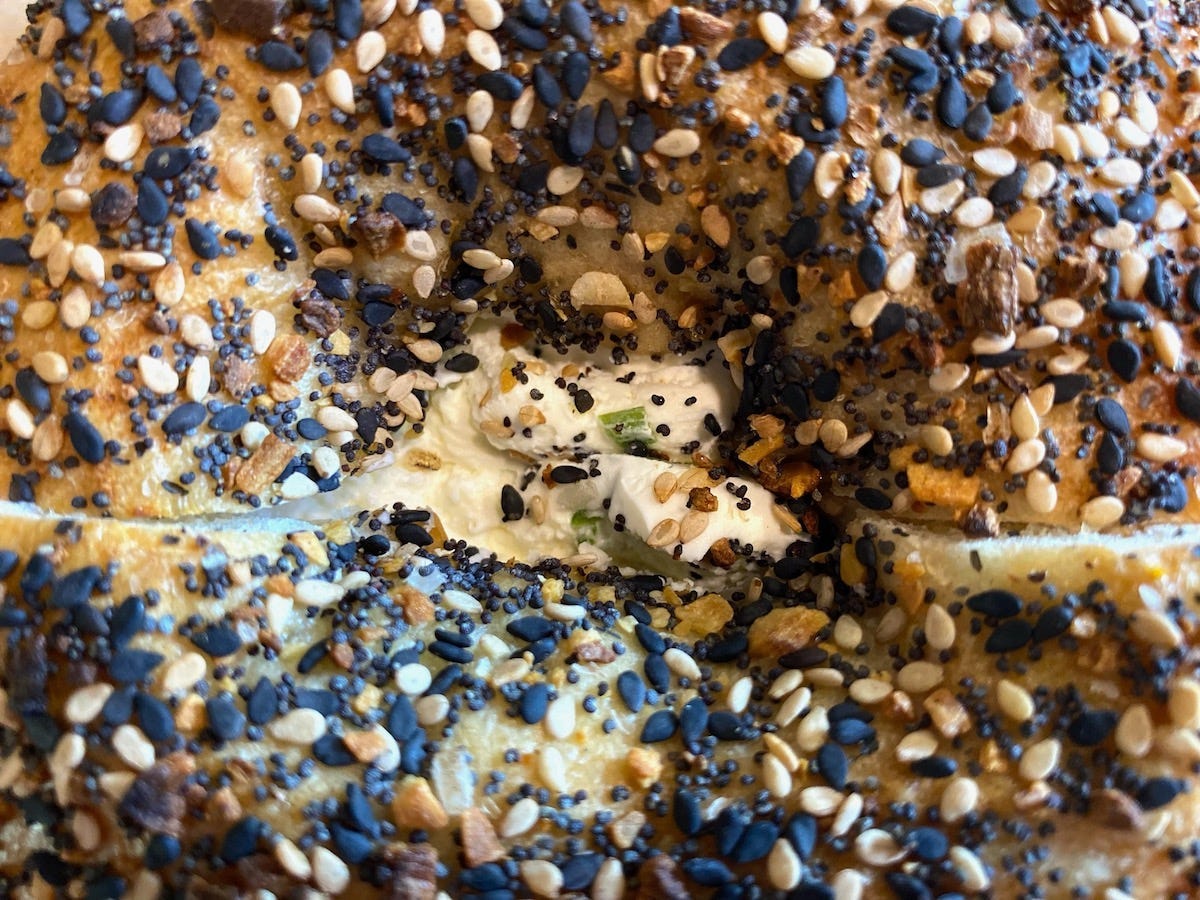Everything bagels everywhere all at once
How many people "invented" this iconic bagel flavor anyway?
Welcome to It’s A Shanda, one Northeastern Jew’s quest to find a decent bagel in Seattle (and beyond). Along with free bagel reviews every Sunday, we also offer bonus posts each Wednesday. If you’re already subscribed, I hope you’ll consider upgrading to a paid subscription! Thank you for reading.
How would you define an everything bagel?
You probably have a good idea in your head. It includes a very specific list of seeds and seasonings.
That list includes five ingredients.
Or maybe it’s six.
No wait, it might be seven.
Actually, maybe it can be a mixture of ten.
Wherever you land on that seasoning spectrum, you’re likely pretty adamant about it. There’s a right way and all the others are wrong.
I know I certainly have my correct answer. To me, an everything bagel includes garlic flakes, onion flakes, poppy seeds, sesame seeds, and kosher salt. Maybe you do black sesame seeds to be cool or you play around with the kind of salt you use, but that’s my personal expectation.
Peter Ryan at Bagel Oasis disagrees with me on the salt aspect. He forgoes that as part of the everything mix at his store.
“I didn't like the salt because I felt I wanted a beer,” he told me. “It's more like a pretzel, right?”
That’s an opinion shared by a lot of Seattle-area bagelmakers as salt seems to be the dividing line between everything offerings. Howdy Bagel, Dingfelder’s, Loxsmith, and Zylberschtein’s are all among the saltless while Aaron’s Bagels, Mt. Bagel, Old Salt, Otherside Bagel, and Westman’s do put salt in their mix.
Whether or not to use salt is just one aspect of the everything mix conundrum. Plenty of shops and bagel makers out there play around with the seasoning mix in more extreme ways. My recent trip to Good Bagels Cafe introduced me to the everything bagel with fennel seeds. You’ve also probably come across an everything bagel that includes caraway seeds, which tend to be more well-known for their use in rye bread. And I always like to bring up the time I got an everything bagel covered in oats at Reno in Chicago.
Some of those choices probably sound wrong to you. Heck, all of them might. But that brings us back around to the core idea at play here: What IS the correct mix for an everything bagel? Is there even such a thing? And should a bagel that doesn’t adhere to that generally accepted notion of everything seasoning be called something else?
To understand what an everything bagel should be, we have to go back to the beginning when it was first created. The only problem is that there are a lot of different people claiming they were the ones to come up with the now-iconic bagel mix.
It might have been the Syosset, NY shop Bagel Master in 1977, which advertised “something called the everything bagel” topped with salt, poppy seed, sesame seed, garlic, and onion.
It might have been David Gussin, a teenager working at Charlie’s Bagels in Howard Beach, Queens, who swept up all of the burnt leftover seeds around the oven sometime around 1979 or 1980 and had an epiphany. Gussin claims to have invented the “everything bagel” name, except that, well, see above.
Author Seth Godin says that when he was working in a bagel shop in 1977 he created the everything bagel through simple experimentation.
Restaurateur and MasterChef host Joe Bastianich also claims to have invented the everything bagel. In his memoir, he says that he was offered a job at Bagel Den in Bayside, Queens in the late 70s. While getting stoned one day, he says the idea of putting all of the individual seeds on one bagel came to him, though he had stopped working at the bagel shop at that point.
Sports marketer Brandon Steiner says that he created the everything bagel in 1973. “One night I was screwing around with different combinations of toppings – sesame, salt, poppy, onion and garlic – making braids, onion flats, and other unorthodox concoctions. Then, after a while, I had the thought to throw all the toppings on a bagel at once,” wrote Steiner. “That’s how I invented the everything bagel. This was 1973; I was 14.”
What’s the truth? Well, once you take a step back, I think you have to admit that the idea of “inventing” the everything bagel is pretty stupid. The notion that no one just decided to throw a bunch of seeds on top of a bagel before the 1970s is asinine. History is probably littered with people who did it before all these guys but didn’t have the ability to get quoted in The New Yorker.
The more important aspect of all these claims, to me, is that they all seem to have the same ingredient list for their “inventions.” Onion, garlic, poppy seeds, sesame seeds, and salt. Five toppings, that’s it. We can squabble over caraway seeds, which did become part of the mix in New York City at some point, but it feels safe to say the generally accepted notion of the everything bagel exists within those five toppings.
Even in Canada, where Montreal-style bagels dominate the scene, the traditional version of the everything bagel (“all-dressed”) is either a mix of those five ingredients or the basic five plus caraway seeds.
All of which is to say that whether or not you feel like the everything bagel shouldn’t be constrained by the shackles of tradition or history, there’s still a pretty common expectation of what you’ll get when you order one. And when a place deviates from that expectation, you’re butting up against that.
That’s not to say that you can’t deviate. You can do whatever you want. We live in a world of rainbow bagels, brisket bagel sandwiches, and birthday cake-flavored schmears. But every choice has a consequence and you have to be willing to live with them. Reaching out to one audience might not work with another audience. Evolution is a good thing, but certain things work because they just work exactly how they are.
I personally think the everything bagel is one of those things. How about you?
Thanks for actually reading this far. Know someone in the Greater Seattle Area (or beyond) who would appreciate way-too-detailed reviews of bagels? Please forward the link their way.

